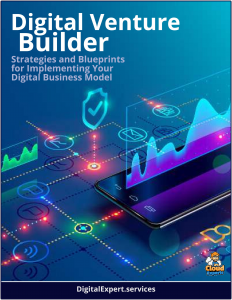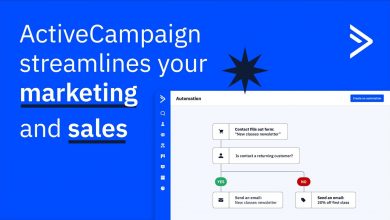Digital Business Models – Introduction and Overview
This article explains what a digital business model is, its key components, and how businesses can develop one to thrive in the digital age.
 In today’s fast-paced, technology-driven world, businesses must adapt to stay competitive, and a digital business model offers a powerful framework for achieving this.
In today’s fast-paced, technology-driven world, businesses must adapt to stay competitive, and a digital business model offers a powerful framework for achieving this.
A digital business model is a strategic approach that leverages digital technologies, such as the internet, data analytics, artificial intelligence, and cloud computing, to create, deliver, and capture value.
Unlike traditional models that often rely on physical infrastructure and in-person interactions, digital business models use digital platforms to drive innovation, efficiency, and scalability.
These models enable companies to reach global audiences, personalize customer experiences, and quickly adapt to market shifts.
What is a Digital Business Model?
A digital business model describes how a company uses digital technologies to generate revenue, engage customers, and operate efficiently. It focuses on creating value through digital platforms, data-driven insights, and automated processes. These models enable businesses to reach global audiences, personalize offerings, and adapt quickly to market changes.
A digital business model is defined by its use of technology to generate revenue, engage customers, and streamline operations. It is characterized by its reliance on digital tools, such as apps, websites, or blockchain, to deliver products or services.
These models prioritize customer-centricity, using data to understand and meet customer needs, while also being highly scalable, allowing businesses to grow without proportionally increasing costs. Data-driven decision-making is central, enabling companies to optimize operations and marketing strategies, while agility allows for rapid pivoting in response to market trends.
Examples include e-commerce giants like Amazon, which sell products online; subscription services like Netflix, which provide streaming content; and platform-based businesses like Uber, which connect service providers with consumers through digital marketplaces.
Developing a Digital Business Model
Adopting a digital business model offers significant advantages. By leveraging digital platforms, businesses can access global markets, breaking geographical barriers to serve customers worldwide. These models also enhance cost efficiency through automation and cloud-based solutions, reducing operational expenses.
Additionally, digital tools enable personalized customer experiences, improving satisfaction and loyalty. Companies gain a competitive edge by innovating quickly and can unlock new revenue streams, such as monetizing data or offering subscription-based services. These benefits make digital business models essential for staying relevant in today’s economy.
Developing a digital business model requires a thoughtful, strategic approach that aligns technology with business objectives. The first step is to assess your current business, evaluating its strengths, weaknesses, and customer base to identify where digital tools can add value.
Understanding market trends and competitors’ digital strategies is also crucial, as is gathering insights into customer needs through surveys or data analytics. Next, businesses must define a clear value proposition, articulating how the digital model will deliver convenience, personalization, or cost savings. For example, a traditional retailer might shift to an e-commerce model to offer 24/7 shopping and tailored product recommendations.
Mapping to a Technology Solution
Choosing the right digital business model is a critical decision, and it should align with your business goals and customer expectations.
Options include e-commerce for online sales, subscription models for recurring revenue, or platform-based models that connect buyers and sellers. Some businesses may opt for a freemium approach, offering free services with paid upgrades, or a data-driven model that monetizes user insights.
Selecting the appropriate technologies—such as cloud computing for scalability, AI for personalization, or mobile apps for accessibility—is equally important. Building a robust digital infrastructure follows, which involves creating user-friendly, secure, and scalable platforms, integrating them with existing systems, and prioritizing cybersecurity to protect customer data.
Customer experience is at the heart of a successful digital business model. Using digital tools to personalize interactions, such as tailored marketing or instant chatbot support, can significantly enhance engagement. Optimizing user interfaces for ease of use ensures customers can navigate platforms effortlessly. Once the model is launched, testing and iteration are essential.
Starting with a pilot project allows businesses to gather feedback and monitor metrics like conversion rates and customer retention. Agile methodologies enable continuous improvements based on data and user insights. Training employees to use digital tools effectively and fostering a culture of innovation are also critical to ensure the organization embraces the transformation.
Conclusion
Despite the benefits, developing a digital business model comes with challenges. High initial costs for building digital infrastructure can be a barrier, and resistance to change from employees or customers may slow adoption.
Cybersecurity risks, such as data breaches, are a significant concern, and the crowded digital space demands differentiation to stand out. Regulatory compliance, including adherence to data privacy laws, adds complexity. To overcome these, businesses can start small with pilot projects, communicate the benefits of digital transformation to gain buy-in, invest in robust cybersecurity, and differentiate through unique value propositions while staying informed about regulations.
A compelling example of a successful digital business model is Netflix, which evolved from a DVD rental service into a global streaming leader. Netflix uses a subscription-based model for predictable revenue, leverages data-driven algorithms to personalize content recommendations, and relies on cloud-based streaming to serve millions of users in over 190 countries. Its success underscores the importance of aligning technology, customer needs, and scalability.
By following a strategic approach—assessing the business, defining value, selecting the right model, leveraging technology, and continuously optimizing—any company can develop a digital business model that ensures long-term success in the digital economy.




